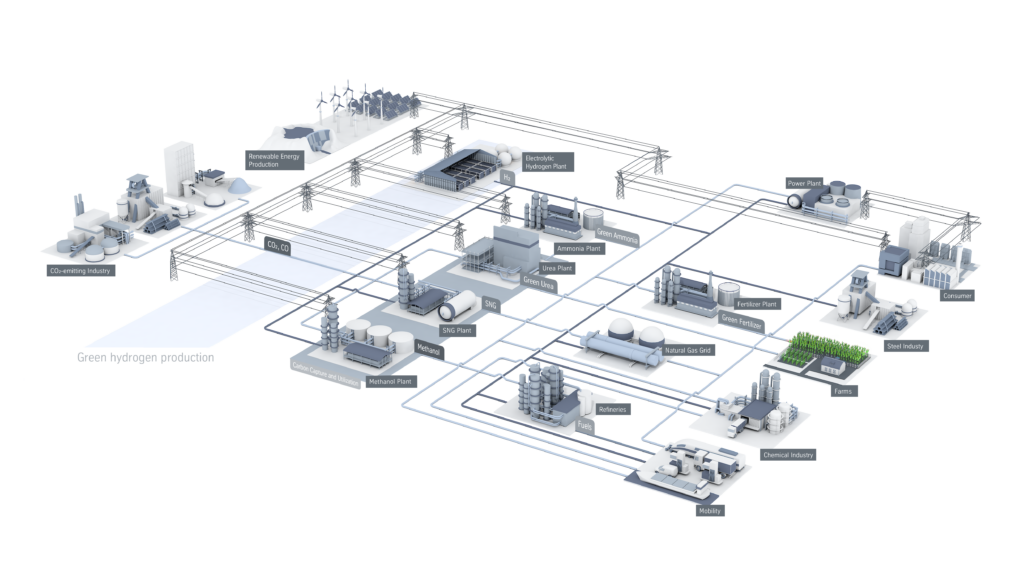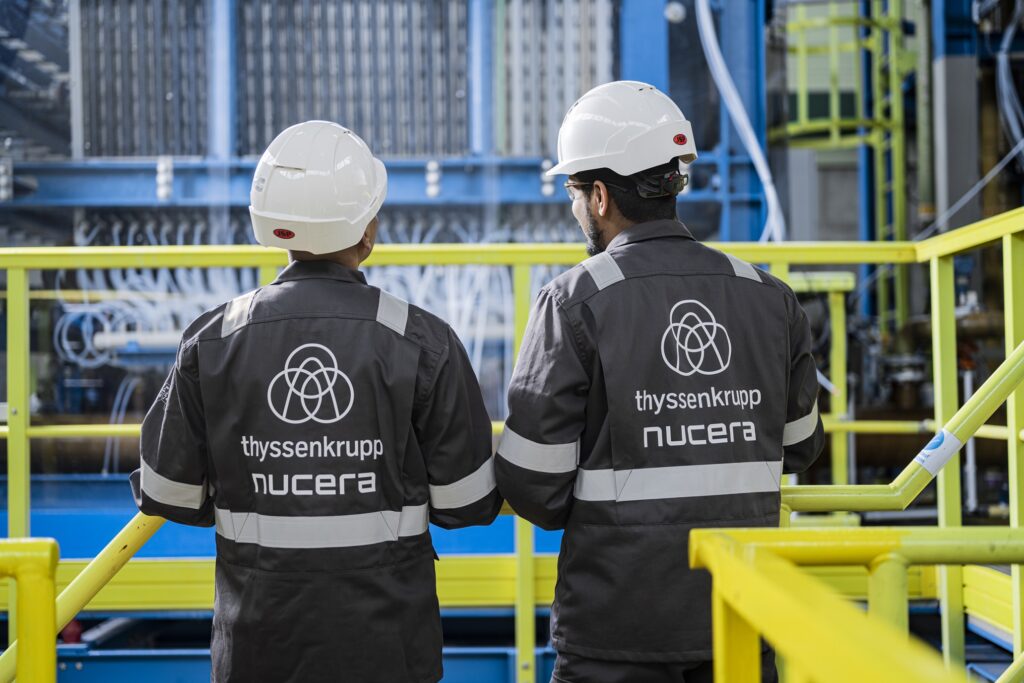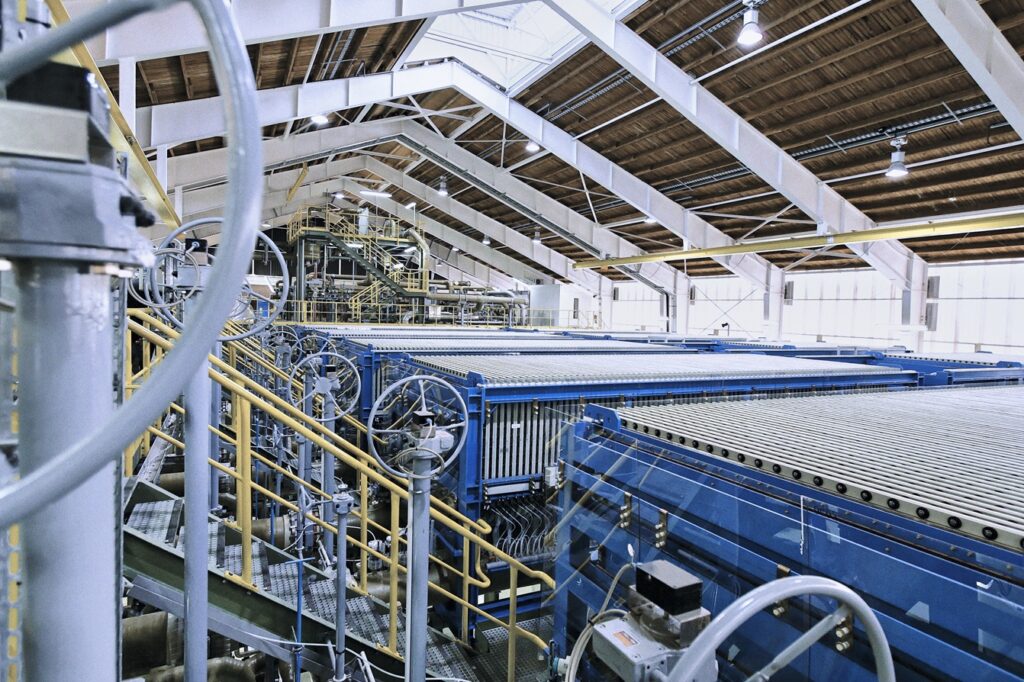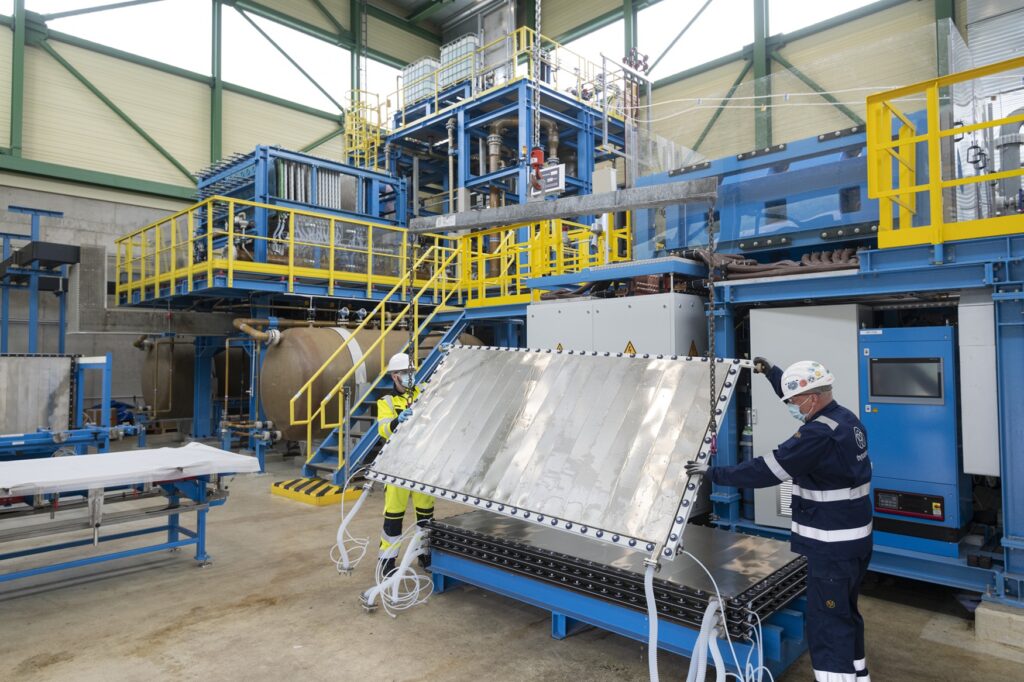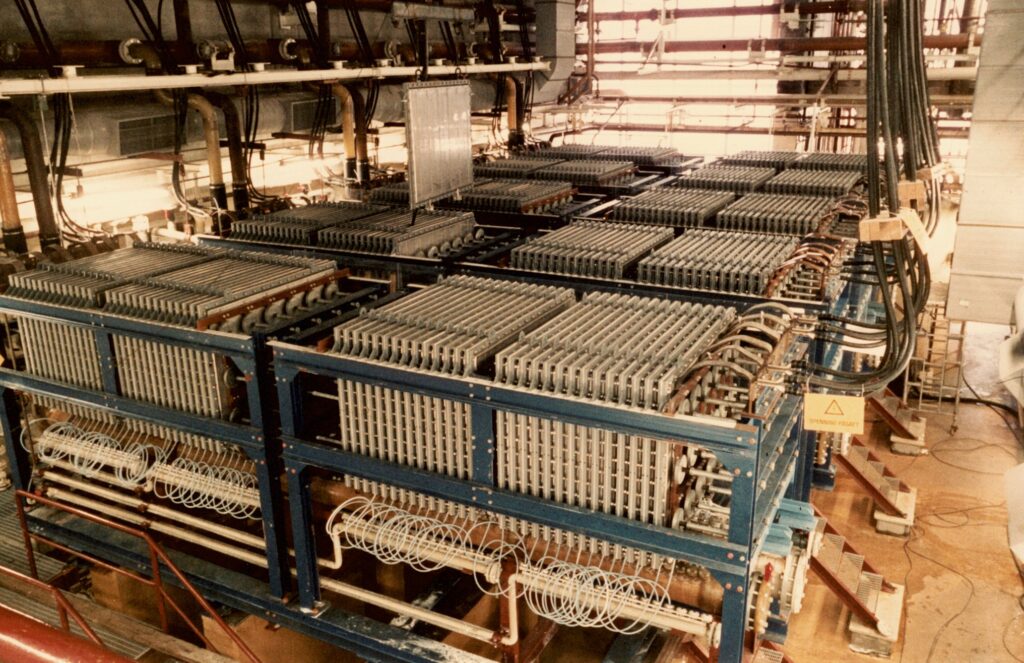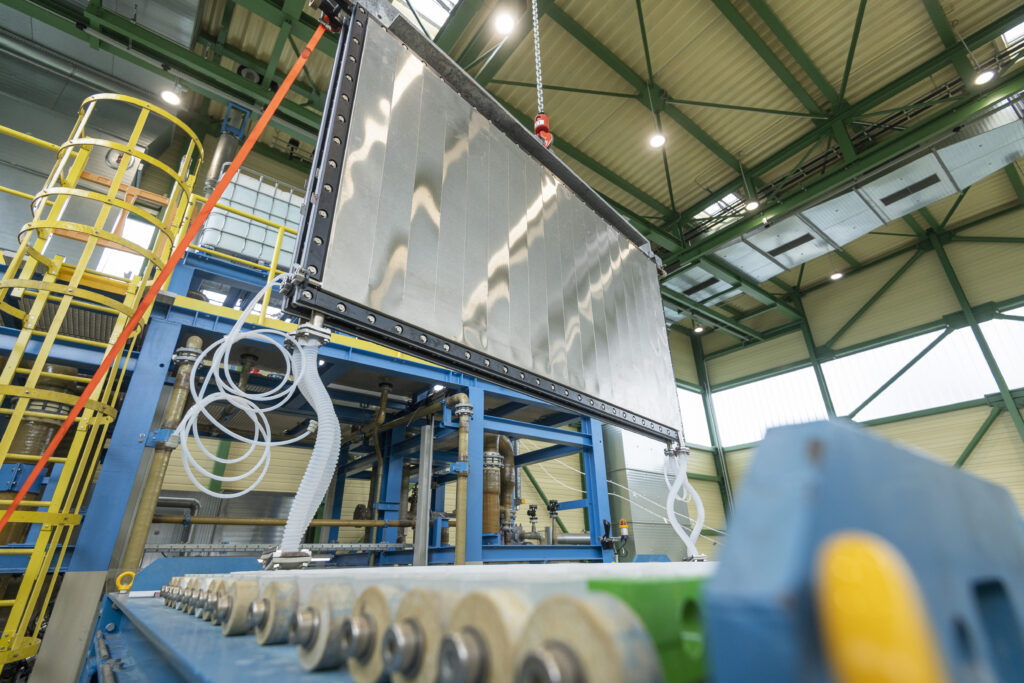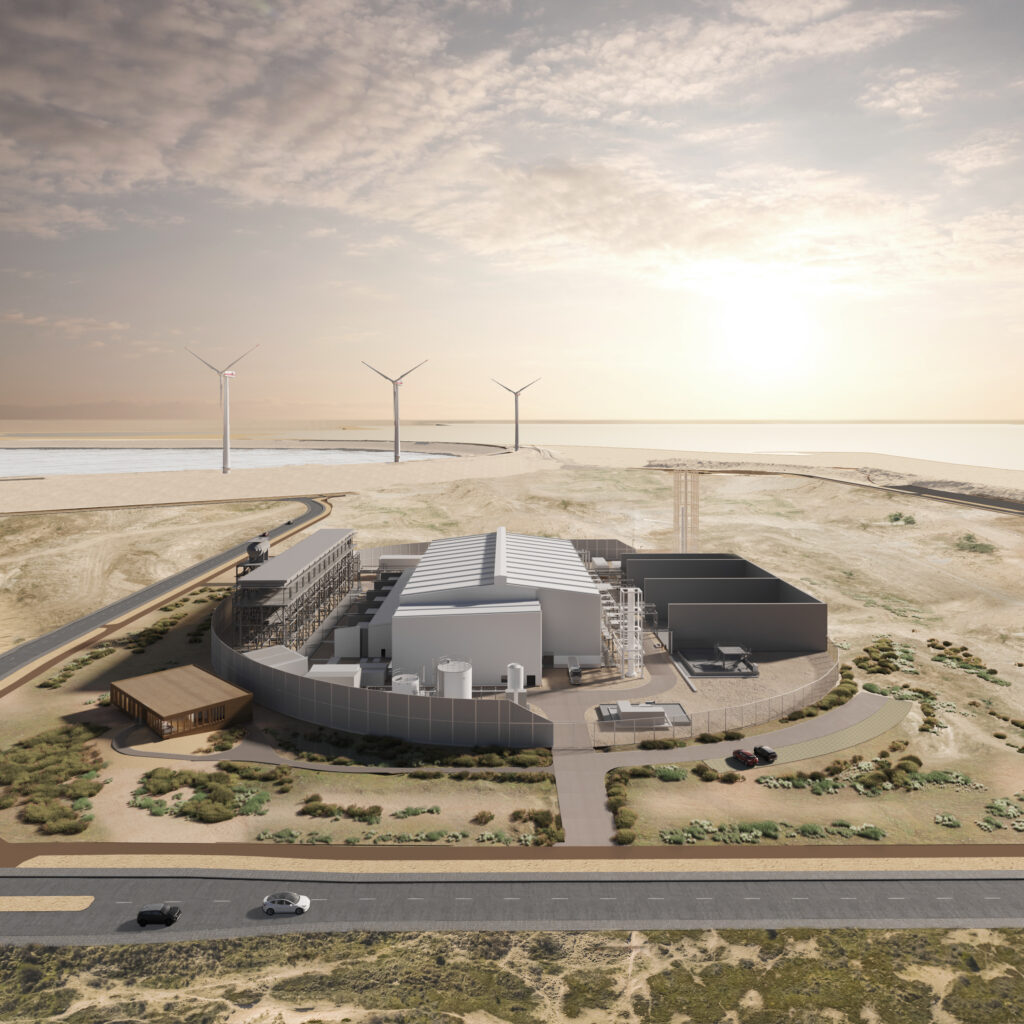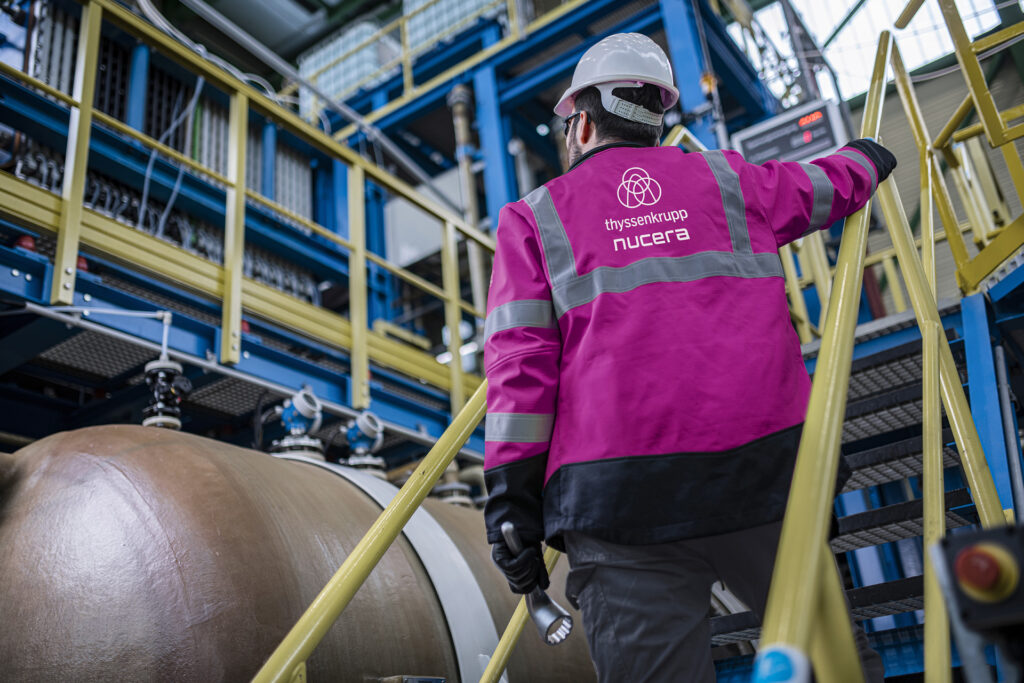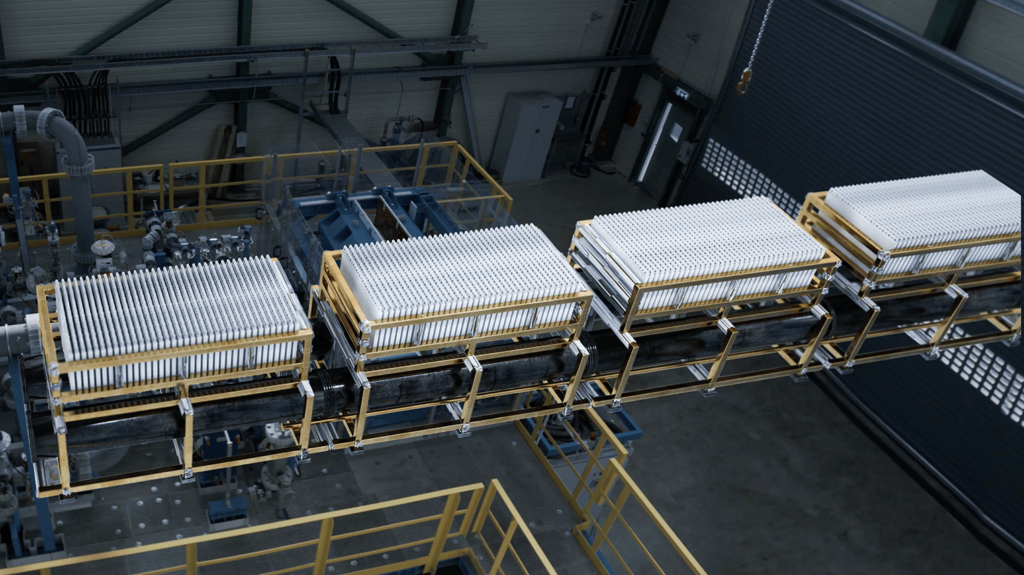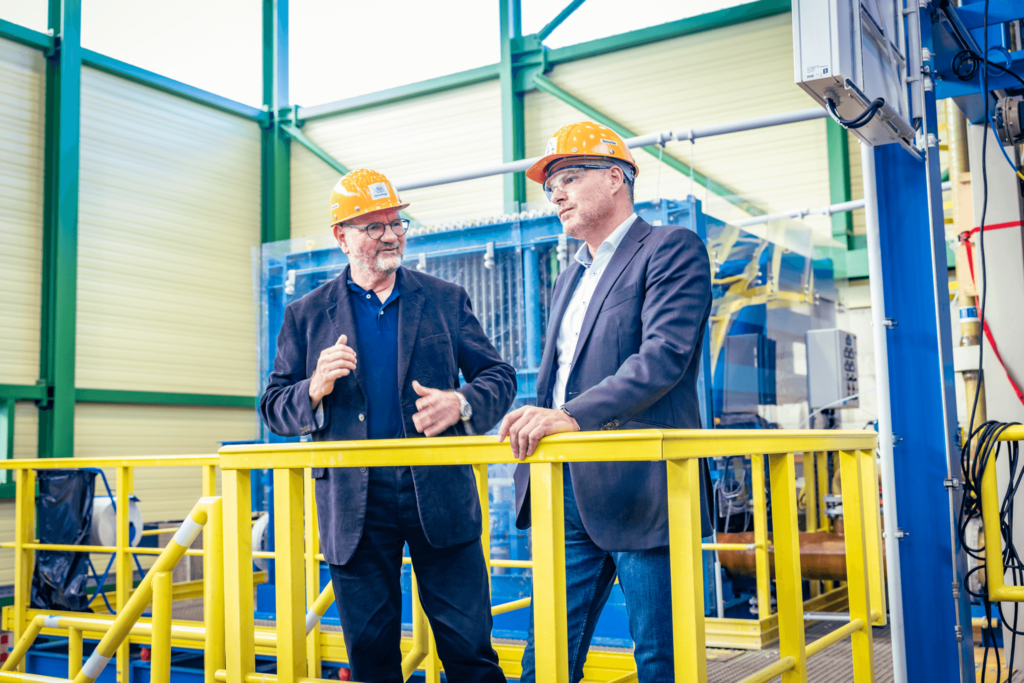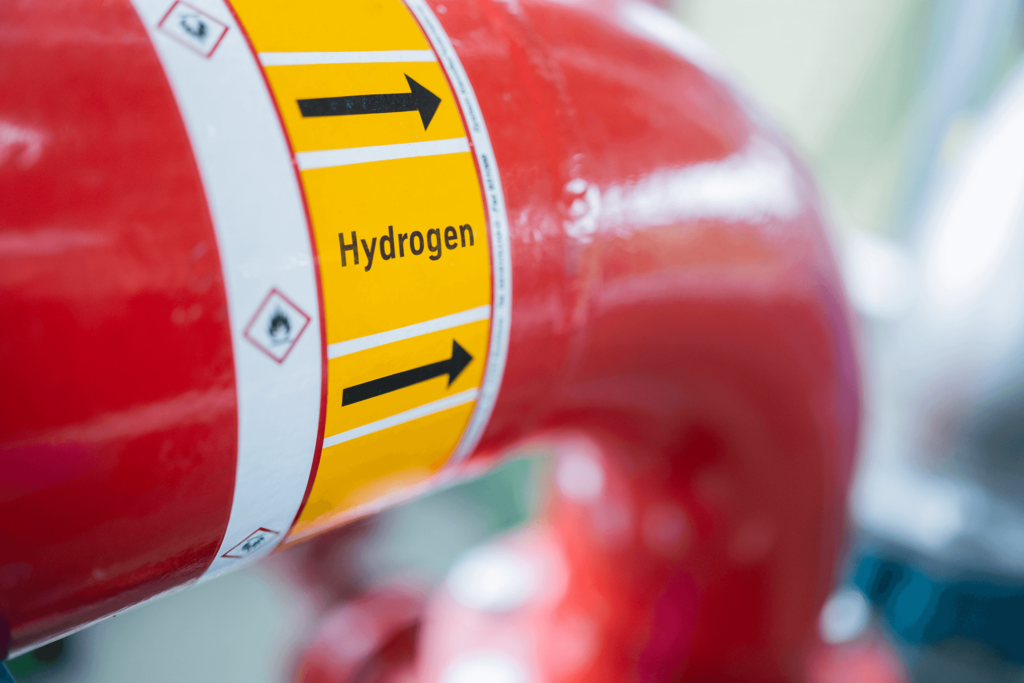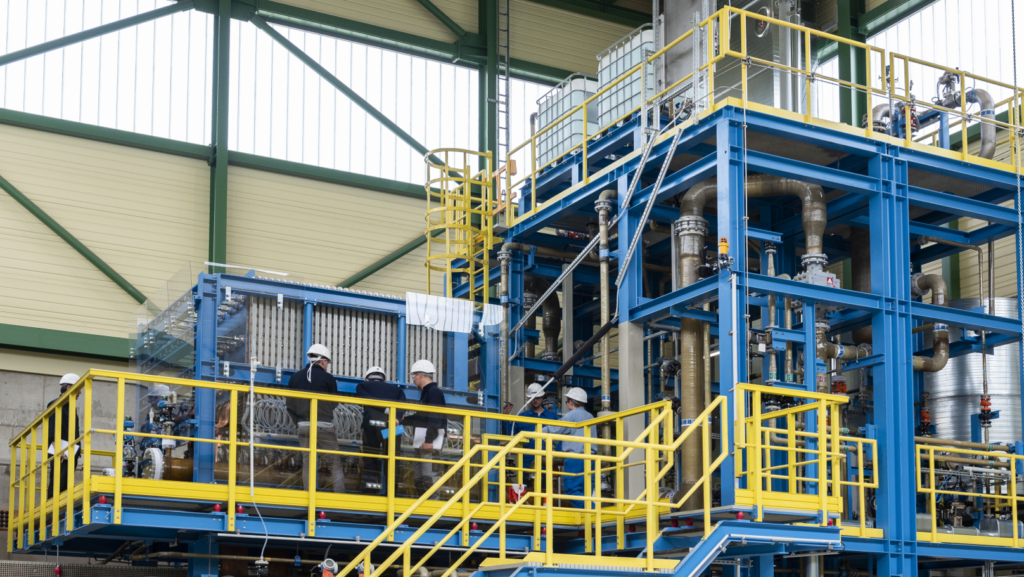Shifting to a more sustainable energy future is an urgent global necessity. However, a recurring issue spans multiple sectors: In ammonia production, it’s currently not possible to produce ammonia using green electricity. Similarly in steel production, reducing iron ore with green electricity to achieve a “green” process remains a challenge. In this quest, green hydrogen stands out as a viable option. But green hydrogen alone is not the answer – what we need is sector coupling. In this article, we’ll delve into the importance of sector coupling, its impact, and how it can propel the green hydrogen economy and our journey toward the energy transition.
What is Sector Coupling?
Sector coupling is the process of integrating renewable electricity with other energy sectors to forge a more efficient, interconnected energy system. Traditionally, energy sectors — such as electricity, transportation, heating, and the chemical industry — have operated independently, meaning that until now, for example, electricity has played almost no role in the transportation sector. However, sector coupling seeks to dismantle these barriers, fostering synergies among them. This approach can significantly enhance overall efficiency. For example, it can repurpose excess renewable energy, which cannot be immediately used for electricity, into hydrogen production. This plays a crucial role in accelerating the shift towards a decarbonized economy.
Explained: Sector Coupling, Power-to-X and the Role of Green Hydrogen
The biggest challenge in sector-coupling is that many sectors (especially industry sectors) cannot use green electricity directly. These sectors need to use molecules, which is why water electrolysis and green hydrogen are key enablers for sector coupling. During the production of green hydrogen, electrolysis “transforms” green electrons into green molecules, that is green hydrogen, and thereby enables the utilization of green energy, for example, in the chemical industry or in the steel industry.
Green hydrogen can also serve as a basis for the production of other chemicals, such as synthetic fuels. The variety of possible processes for the transformation of renewable electricity to green molecules is commonly referred to as Power-to-X (PtX). The outcome of a PtX process can in turn be used to decarbonize other (industry) sectors, such as steel, chemical manufacturing and refineries.
Sector coupling and PtX can thus have a major impact on the progress of the energy transition.
Challenges and Opportunities
Sector coupling serves as the primary solution for decarbonizing hard-to-abate sectors. It guarantees the reduction of carbon emissions in application domains where no viable alternatives exist.
While sector coupling holds immense promise, there are some challenges:
- Infrastructure: Developing the necessary infrastructure for production, distribution, and utilization is crucial.
- Policy and Regulation: Coordinating policies across different sectors is essential. Governments must incentivize green hydrogen adoption and create a level playing field.
Sector coupling and PtX are already essential for the energy transition, even without relying on additional technological innovations. However, continued technological advancements would offer huge opportunities to further develop the existing business case.
Accelerating the Energy Transition
Sector coupling, particularly in conjunction with green hydrogen, has the potential to transform our energy framework dramatically. By breaking down barriers between sectors and seamlessly integrating renewable resources, we can create a more resilient, sustainable, and interconnected energy system, thereby decarbonizing the industry. As we progress towards a more sustainable future, the role of sector coupling and Power-to-X (PtX) technologies will be pivotal in navigating the energy transition successfully.


